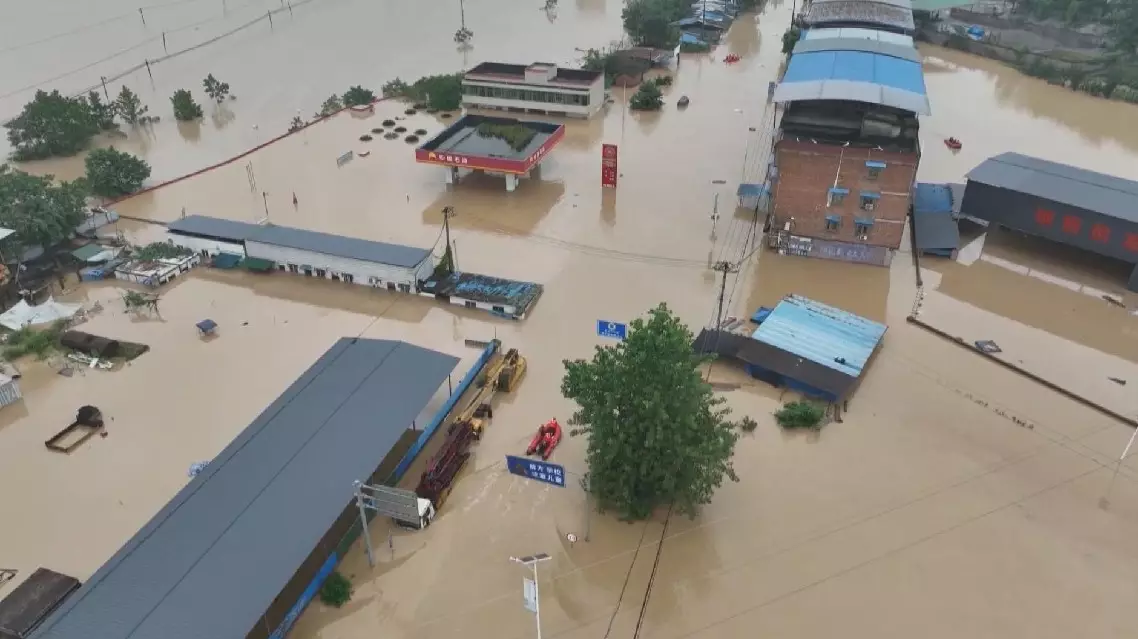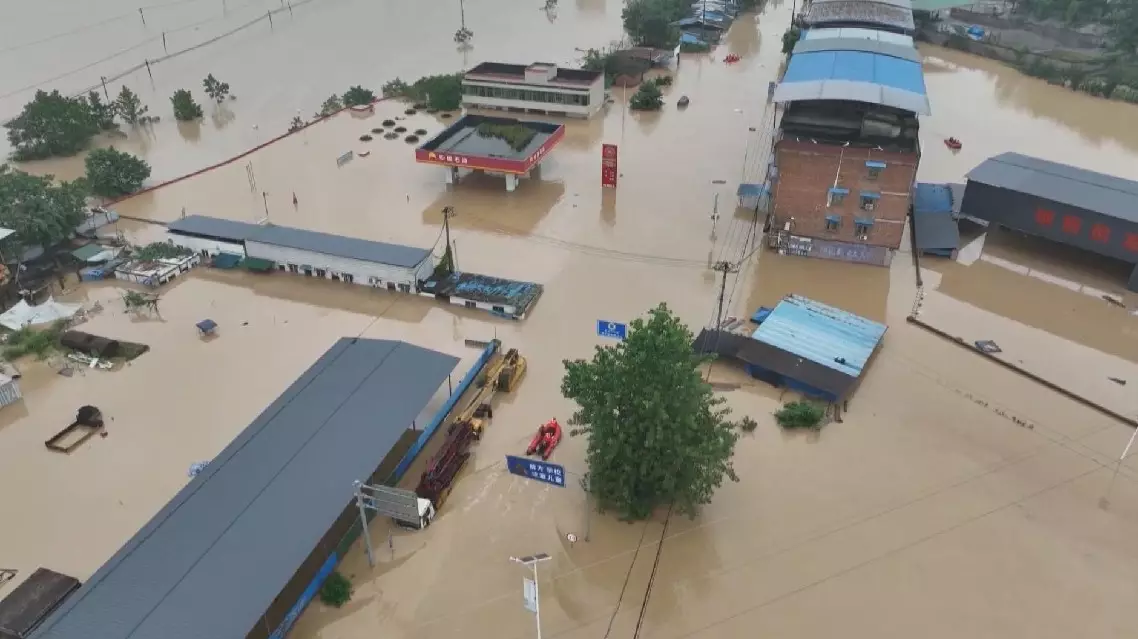Rescuers rode rubber rafts to save trapped residents while maritime authorities made rapid navigational adjustments amid flooding in southwest China's Chongqing, through which the Yangtze River flows.
Intense downpours hit 12 counties and districts in the municipality on Thursday and Friday.
On Friday afternoon, the upper Yangtze River in Chongqing's Banan District, situated in the Sichuan Basin, witnessed this year's first major flood peak with water levels surpassing 180 meters. To ensure the safety of vessel navigation, the Chongqing Maritime Bureau issued a warning and implemented navigation restrictions in certain sections of the Yangtze River.
Authorities also warned that some rivers in the southeastern and northeastern regions of the municipality may see water rising above alert levels in the following days.
As of 15:00 on Friday, the water level in the Yangtze River's Fuling section in Chongqing reached 167 meters. To safeguard the passage of ships, the waterway authorities leveraged real-time monitoring and scheduling to adjust over 200 navigation markers in response to the changing water levels.
On Thursday, a sudden downpour struck Changshou District, a largely scenic area along the Yangtze's route northeast of Chongqing's main urban area, causing the inundation of the first floors of many low-lying residential buildings. Professional rescue teams were mobilized to evacuate and relocate the trapped residents.
"The water looked so deep, and I was really panicked when I was trapped," said local resident Chen Defen.
In total, over 1,200 people from about 530 households were relocated in the district's Yuntai Town on Thursday. The rainfall has since subsided and floodwaters have receded, allowing the affected residents to resume life as normal.
Thursday also saw the relentless downpours cause rapidly rising water levels in the rivers of Chongqing's Kaizhou District in the municipality's far northeast, leading to the inundation of part of the Sanhe community in Zhonghe Town. Rescue teams were dispatched to save residents stuck in the submerged communities and relocate them to save areas. Currently, the rainfall in Kaizhou District has stopped and the residents have gradually returned to their homes.
Affected by the persistent heavy rainfall, 15 medium and small rivers in Chongqing's Fengjie County have experienced water level swelling of one to four meters, with multiple rivers exceeding warning levels. In response, the county on Thursday opened the dual sluice gates of a dam, discharging floodwaters at a rate of 900 cubic meters per second.

Residents rescued, river navigation adjusted as rainstorms batter China's Chongqing

Residents rescued, river navigation adjusted as rainstorms batter China's Chongqing
The 2024 U.S.-China People's Dialogue is being held in Beijing, bringing together personages from academia, business, tourism and other fields to share experiences and exchange views on how to further promote mutual understanding between people, especially the younger generation of the two countries.
The topics under discussion during the event from Wednesday to Saturday focus on tourism and ecology, artificial intelligence, and sports and education. Chinese and American attendees will discuss the prospects of cooperation and share their views and suggestions on the future development of China-U.S. relations.
Stephen Orlins, president of the National Committee of U.S.-China Relations, drew upon his personal stories of engagement to discuss the value of the bilateral people-to-people connections, calling for carrying forward the goodwill and achievements built up over decades of interactions.
"The people-to-people relationship is the foundation of the U.S.-China relationship. It is the foundation. We, as the National Committee of United States-China Relations, when we hosted the Chinese ping-pong team in 1972, that fundamentally altered America's perception of China and Chinese. And in the prior year, 1971, the Chinese hosting of the American ping-pong team fundamentally altered China's perception and Chinese perception of America and the American government and that led, that put the United States and China on a trajectory. What we need to think about is how do we strengthen that," he said.
The non-governmental connections between Chinese and American people have been growing and deepening since young table tennis players from the two countries kick-started the progress toward normalizing China-U.S. relations in Beijing more than 50 years ago.
Kuliang, a place in east China's Fujian Province, has witnessed the deepening bond between Chinese and American people ever since a number of U.S. citizens began living there over a century ago.
A group of American veteran pilots of the Flying Tigers who fought alongside the Chinese army and people against the Japanese invasion during World War II have also contributed to promoting friendly exchanges between the two countries.
At a time when the U.S.' so-called "political correctness" of being tough on China has led to the low ebb in the bilateral relations, participants at the dialogue believe that the current problems and differences will not change the aspirations of the people on both sides for friendly cooperation, saying that the relations will certainly improve through more exchanges and dialogues.
"In this digital age, we have so much information, but because the information is so, lacks context that sometimes it can actually be more dangerous than helpful, right? So that's why I think we need to have people-to people-contact here. The next generation will not have enough people who know anything about China. We have to solve that problem," said David Moser, associate professor of Foreign Language at Beijing Capital Normal University.
Launched in 2023, the annual U.S.-China People's Dialogue brings together leading American and Chinese nationals from a wide range of business, social, and cultural fields to explore ways to foster greater people-to-people exchanges between the two countries, and to chart a path forward.

2024 US-China People’s Dialogue held in Beijing











